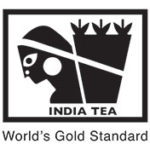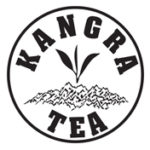Indian tea is globally acknowledged as among the finest in the world owing to a long tradition of growing and expertise, strong geographical indications, heavy investments in tea processing units and continuous innovation.
Tea is grown in many regions across India, but Northeast India (including Assam) and north Bengal (Darjeeling district and the Dooars region) produce a bulk of the crop. Tea is also grown on a large scale in the Nilgiris in South India, and a handful of other places on a small-scale.
India is one of the world’s largest consumers of tea, with about three-
fourths of the country’s total produce consumed locally.

TEA PRODUCING REGIONS
Information compiled from Tea Board of India statistics
NORTH INDIA
Assam Tea (Production 507 million kg)
The state of Assam which includes the northern Brahmaputra valley, the middle Karbi and Cachar hills and the southern Barak valley, is the single largest contiguous tea growing region in the world. The Kaziranga forest is home to the Indian rhinoceros, also known as the ‘greater one-horned rhino’ which forms the basis for the Assam GI (Orthodox teas).
The region goes through very humid summers and 2500-3000 mm of heavy rainfall from March through September. This, coupled with fertile, alluvial soil result in teas esteemed for their rich taste, bright liquor and malty flavour.
Tea plantations in Assam grow the Camelia Sinensis var. Assamica variety of the tea plant – the only other region apart from Southern China, which grows its own native tea plant.
Tea from Assam has a rich, full bodied, deep-amber liquor with a brisk, strong and malty taste, making it ideal for the early morning cup. Second flush orthodox Assam teas are extremely popular for their distinctive taste and bright liquor.
Darjeeling Tea (Production 9.8 Million kg)
Tea has been grown in Darjeeling since 1841.
‘Darjeeling’ if often called the ‘Champagne of Teas’ and is sold at very high premiums in the international and domestic market. Highly sought after, Darjeeling tea accounts for only 1% of India’s total tea produce. The flavour and finesse of Darjeeling gives it a legendary status and exclusivity among fine teas. Darjeeling tea is golden or amber in liquor, and exhibits a unique, delicate flavour that is called ‘Muscatel’, or, having the flavour of muscatel grapes. Teas
are usually consumed without milk and often without sugar to enjoy the delicate taste.
Darjeeling Tea is the first tea to receive a geographical indication (GI) status that is protected worldwide. The GI status has been provided to only 87 tea gardens in the region that produce around 10,000 tonnes of tea annually. Most Darjeeling Tea is made from the Camelia Sinensis var. Sinensis variety plant.
Tea plantations in Darjeeling are situated at altitudes between 600 and 2,000 metres. The region gets very adequate rainfall (3000-3300mm) but the steep slopes ensures excellent drainage.
Plucking Darjeeling tea leaves is a slow, exacting and time consuming process and is always done by hand due to the hilly terrain.
Dooars and Terai Tea (Production 226 million kg)
The Dooars also grow the Assamese tea plant.
Today, Dooars and Terai have a combined annual production of 226 million kg of tea, which accounts for around 25% of India’s total tea crop.
The name Dooars is derived from doors, highlighting the region’s significance as a gateway to Northeast India and Bhutan. Most gardens in this region are between 90 m to 1,750 m above sea level. The region receives an average rainfall of around 3500 mm and the monsoon season stays from the middle of May to the end of September.
Tea from Dooars is described as clear, black and heavy, while Terai is slightly spicy and sweet.
Kangra Tea (Production 0.8 million kg)
The Kangra valley is located at an altitude of around 1,500 m above sea level and receives an average rainfall of 230-250 cm which it receives quite uniformly. Temperatures range between 13°C and 35°C for the cropping season from March to October.
The unique natural climate which is relatively free of pests and insects, allows tea to be grown organically in the Kangra valley.
Although the production is very small compared to other regions, Kangra teas have produced very high quality teas for over a 100 years and enjoy a good reputation.
Kangra produces both, fine green teas (Hyson, Young Hyson and coarse grades) and distinct black teas (Pekoe, Pekoe Suchong, Coarse teas and Fannings).
SOUTH INDIA
Nilgiri Tea (Production 135 million kg)
Nilgiri tea is named after the Nilgiris, or Blue Mountains, where it is grown at elevations ranging from 1,000 metres to 2,500 metres. The region receives an annual rainfall of 60 to 90 inches.
Nilgiri teas exhibit a briskness, exceptional fragrance and characteristic creamy taste in the mouth that lingers. The liquor is golden yellow in colour, and has notes of dusk flowers.
Nilgiri tea has also been registered as a GI in India, and around 92 million kg of this tea are produced every year – around 10% of India’s total tea production.
Annamalais Tea (Production 30 million kg)
The Annamalais are a range of hills (900 to 1600 metres above sea level) between Kerala and Tamil Nadu. A prominent centre for South Indian teas, it is home to the Tea Research Association.
The tea from Annamallais generates a brisk and bright golden saffron liquor in the cup. It has a strong flavour and a medium to high tone fragrance with biscuit to floral notes.
Wayanaad Tea (Production 16 million kg)
Located about 75 km from the sea in Calicut, the forests of the Wayanad-Nilgiris range are home to many orchards and plantations with a contiguous wildlife zone and receive 2000-2500mm of rainfall.
Tea from Wayanad is medium toned with a clean fragrance and produces an earthy reddish, full bodied liquor in the cup. The liquor is light on briskness and mild and mellow with biscuit notes.
Karnataka Tea (Production 6 million kg)
Karnataka is known as the coffee hub of India, but also produces a fair amount of tea. Tea plantations are mostly located around Chikmagalur, which is located in the Baba Budan Hills of the Sahyadris range. This area has a clean and healthy climate that’s ideal for tea plantations.
Teas from Karnataka produce a golden ochre liquor with a fair amount of briskness and body. They have a simple, balanced character and medium tone.
Munnar Tea (Production 27 million kg)
Munnar, in Kerala, grows tea at elevations from 1000-2500 metres and the region receives between 1300-2700 inches of rainfall.
Tea from Munnar produces a golden yellow liquor with strong body, refreshing briskness and a hint of fruit. It has a clean, medium toned fragrance, which is described as being akin to that of sweet biscuit in a dip of malt.
Travancore Tea (Production 20 million kg)
The area is covered with vast expanses of plantations of tea, coffee, coconut, rubber, pepper, cardamom, rubber and eucalyptus and receives 2000-3000 mm of rain annually. Tea is primarily grown at altitutes between 750-1350 metres.
Tea from the regions has a medium fragrance with reddish liquor and yellow tinge. It has a fairly balanced body and briskness.
Globally recognised marks and GI tags for specific region teas









All the above are registered GI and CTM of the Tea Board of India.
The logos and graphics are displayed here purely for representative purposes. Usage of the CTM/GI, especially on tea packets and packaging must be in strict accordance with the license, rules and regulations of the Tea Board of India.
For more information please visit Tea Board of India: http://www.teaboard.gov.in/


